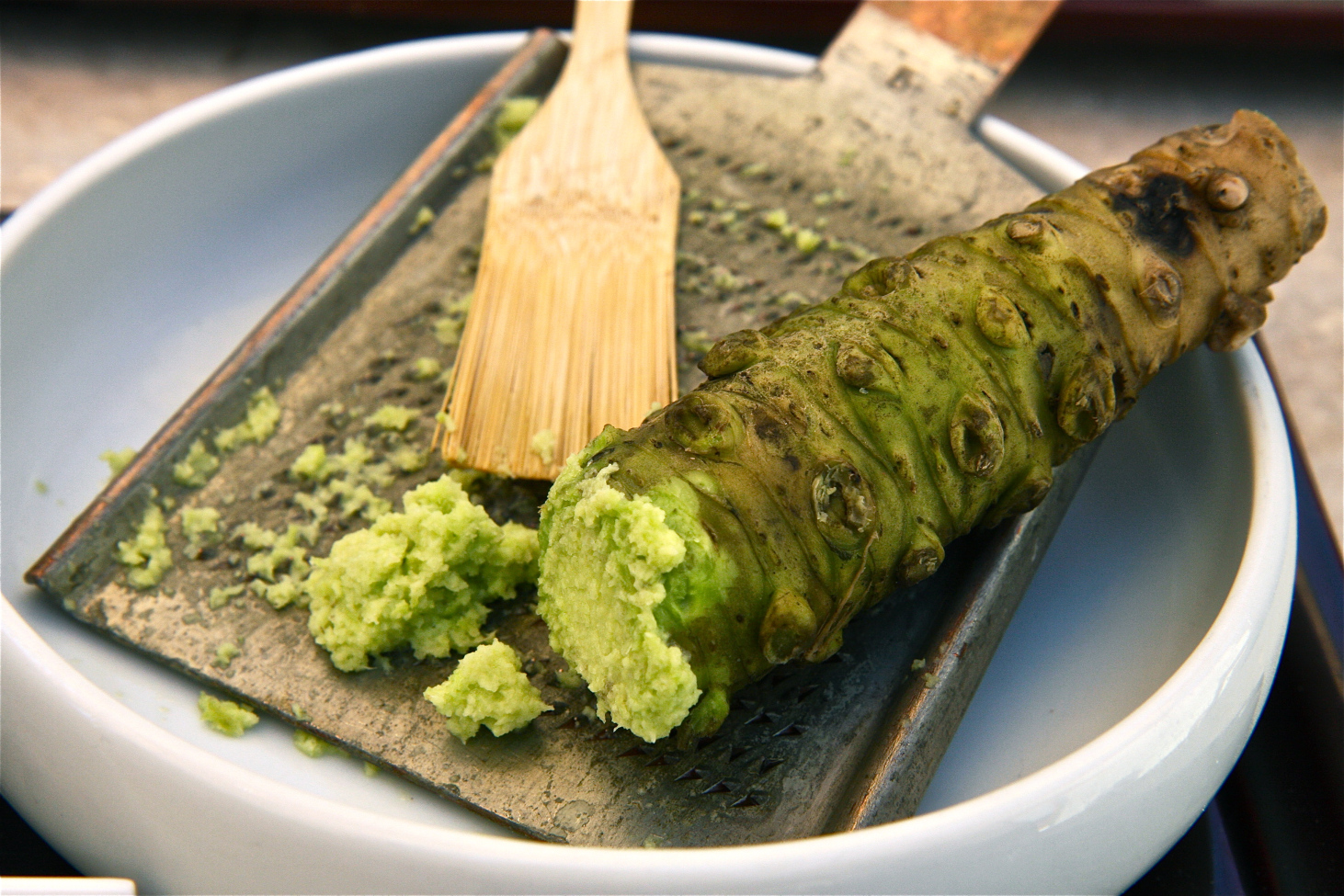Wasabi is a Japanese plant most commonly used as a condiment for raw seafood and sushi. Grown along stream beds in the Land of the Rising Sun, it has a very pungent taste and odor with vapors that can stimulate the nasal passages more than the tongue. It also happens to be one of the few foods you have never really tasted in your life.
Since Japan’s land mass is just under California’s, there is a notable limit with the amount of wasabi growing at any point in time. Also, wasabi preparation is typically done the moment a customer orders; chefs will immediately create the paste from the plant stem with the customer’s meal, otherwise it will lose its flavor within 15 minutes if left uncovered.

Wasabi crops on Japan’s Izu peninsula
The Japanese have their own name for knock-off wasabi – seiyō wasabi or “western wasabi.” This usually involves a combination of horseradish, mustard, starch, and green food coloring. Even though western wasabi has nearly the same taste as genuine wasabi, only the latter has natural green coloring. If you want to try the good stuff, save some time and money and visit a natural grocer or dine at a high-end restaurant.
So, the next time you dine at a Japanese joint, relay this info to your friends or family and not the staff. If you ask for “a side of green horseradish,” you’ll definitely get a weird look.
Sources:
Greaves, Vanessa. “What’s Really In That Green Paste You Call Wasabi?” Allrecipes, 14 Nov. 2015, dish.allrecipes.com/are-you-really-eating-wasabi/.
Spiegel, Alison. “Think You’ve Been Eating Wasabi All This Time? Think Again.” The Huffington Post, TheHuffingtonPost.com, 12 Oct. 2015, www.huffingtonpost.com/entry/fake-wasabi-horseradish_us_561bd666e4b0082030a33959.
Wapner, Kenneth. “Real Wasabi: Horseradish Of A Different Color.” Chicago Tribune, 11 Feb. 1993, articles.chicagotribune.com/1993-02-11/entertainment/9303177715_1_fresh-wasabi-real-wasabi-root.

